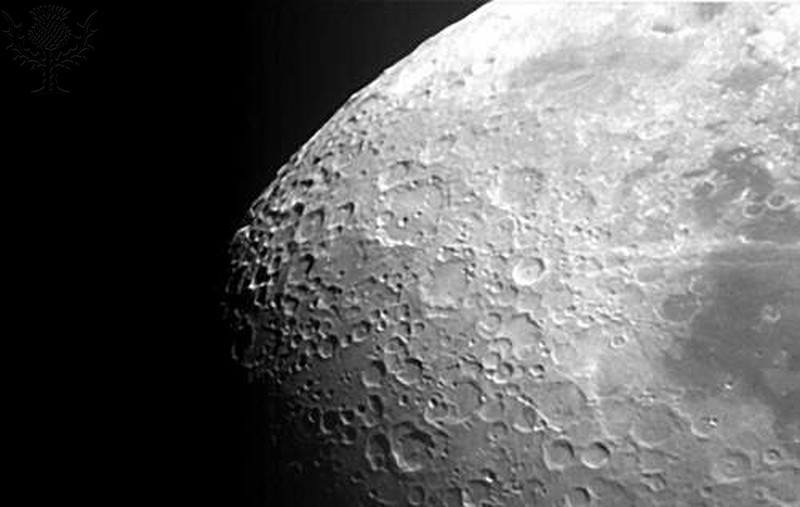
Photo by Photo Researchers on Britannica ImageQuest
The Moon has fascinated mankind for many centuries. In 1610 Galileo Galilei devised his own version of a magnifying tube (telescope) and turned it to the heavens, which began the age of telescopic astronomy.
Here are ten interesting facts about the moon.
- The moon is Earths’ only natural satellite.
- The average density for the moon is 210.4 pounds/cubic foot (3,340 kg/m3). The Moon consists of rocks and metals with deposits of frozen volatiles (including water ice).
- The equatorial diameter of the Moon is 2,160 miles (3,476 km). and a mass of 1.621 x 1023 pounds (7.350 x 1022 kg).
- The Moon travels around Earth at an average distance (center-to-center) of 240,250 miles (384,400 km). We always see the same side/face of the Moon.
- Scientists believe that the Moon was formed more than four billion years ago.
- The moon has quakes, too. They are called Moonquakes and are the result of gravitational stresses.
- The average surface temperature of the Moon is about –4°F (–20°C). It can get very cold, as low as –400°F (–240°C) in the shadowed regions.
- There’s water on the Moon. This is in the form of ice trapped within dust and minerals on and under the surface of the Moon.
- The Moon is drifting away from the Earth.
- The Moon has large supplies of silicon, iron, aluminum, calcium, magnesium, titanium, and oxygen. Lunar soil and rock can be melted to make glass.
You can learn more about the Moon and missions to the Moon through our resource Science Online. Access full-text articles and book chapters. You will also find photographs & illustrations, videos, science experiments, and biographical information on famous inventors, scientists, and more!
Science Online: About Privacy & Terms, Privacy Policy, and Terms & Conditions
Reference: Angelo, Joseph A. Permanent Moon Bases, Facts On File, 2019. Science Online, online.infobase.com/Auth/Index?aid=16967&itemid=WE40&articleId=530447. Accessed 2 Mar. 2021.